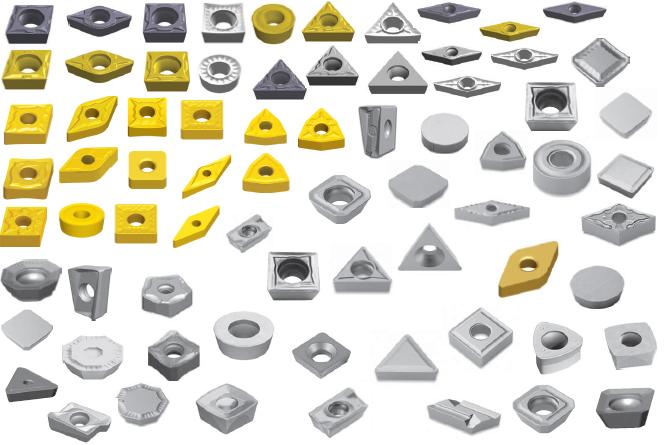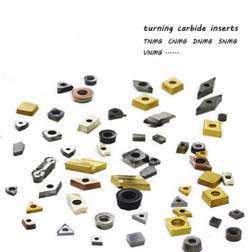What Are Carbide Inserts?
What Are Carbide Inserts?

Carbide inserts, also called tungsten carbide inserts, are the material of the electronic industry insert after several production processes and precision processing.
Anybody who uses a metal cutting machine tool has almost used a carbide insert. Cutting tool inserts manufactured out of carbide are a critical metal cutting tool commodity used for boring, turning, cutoff, drilling, grooving, milling, and threading applications.

Carbide inserts mainly start in powder form of tungsten and cobalt. Then in the mill, the dry raw material is mixed with a combination of ethanol and water. This mixture is dried and then sent to a laboratory for a quality check. This powder comprises agglomerates, small balls of 20 to 200 microns diameter, and then transported to pressing machines where inserts are made.
Carbide materials exhibit high hot hardness and excellent wear resistance. Carbide inserts are much harder than high-speed steel, making them an ideal metal cutting solution. Coatings, such as Titanium Nitride (TiN), Titanium Carbonitride (TiCN), Titanium Aluminum Nitride (TiAlN) and Aluminum Titanium Nitride (AlTiN) extend insert life by providing additional resistance to wear.
Uses of Carbide Inserts
People have been using carbide inserts since the late 1920s. These cutting tools are ubiquitous in the metal cutting world. Here are some of the carbide insert’s applications in the metal cutting industry. Carbides are extremely helpful for dozens of business owners, construction workers, and many other industries worldwide.

1. Making of Surgical Tools
In the medical profession, doctors and surgeons rely on accurate and durable tools for all kinds of medical procedures. Insert carbides are one of them.
The medical industry is the most common industry for the use of carbides. However, the base of the tool itself is crafted with titanium or stainless steel, and the tip of the tool is made of tungsten carbide.
2. Jewelry Making
Carbide inserts are widely used in the jewelry-making industry. They are used for both jewelry shaping and in the jewelry itself. Tungsten material falls behind the diamond on the hardness scale, and it is an excellent material used in making wedding rings and other jewelry pieces.
Moreover, jewelers rely on efficient tools to work on expensive pieces, and carbide and tungsten inserts are one of them.
3. Nuclear Science Industry
Tungsten carbide inserts are also used in the nuclear science industry as effective neutron reflectors. This material was also used during early investigations in nuclear chain reactions, especially for weapons protection.
4. Hard Turning and Milling
Turning is an almost flawless process for ceramics. In general, it is a continuous machining mechanism that allows a single carbide insert to be engaged in the cut for a longer time. This is an excellent tool to generate the high temperatures that make ceramic inserts perform optimally.
On the other hand, milling can compare to interrupted machining in turning. Each carbide insert on the tool body is in and out of the cut during each cutter revolution. If compared to turning, hard milling needs much higher spindle speeds to achieve the same surface speed for working efficiently.
To meet the surface speed of a turning mechanism on a three-inch diameter workpiece, a three-inch diameter milling cutter with four teeth must run four times the turning speed. With ceramics, the object generates a threshold of Heat per insert. Therefore, each insert must travel faster to generate a single point turning tool’s heat equivalent in milling operations.





















